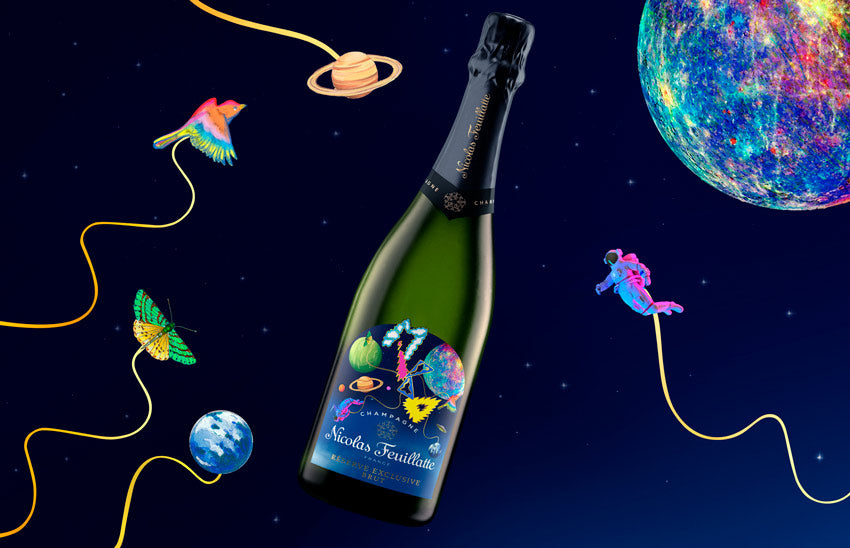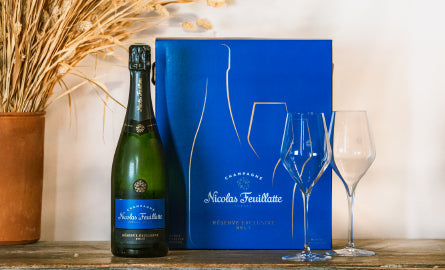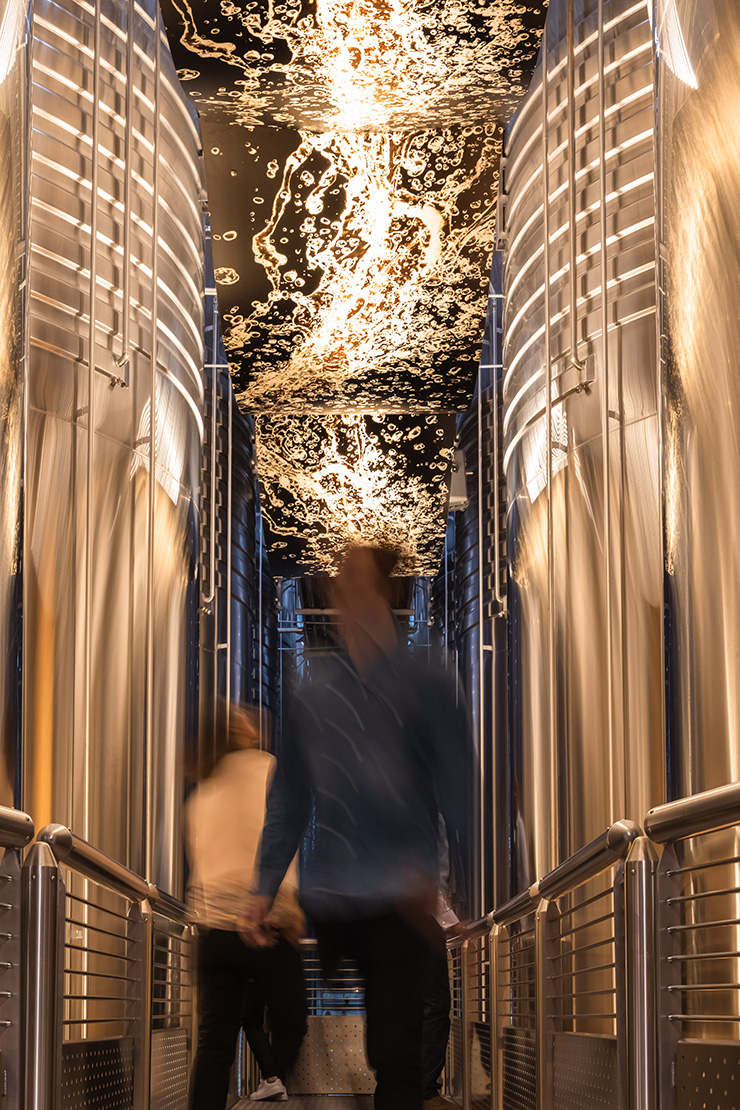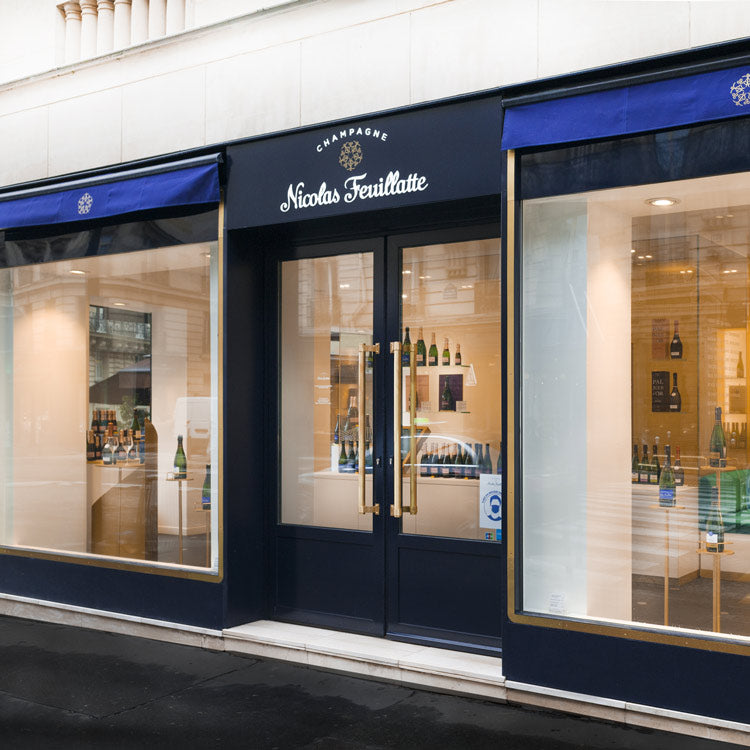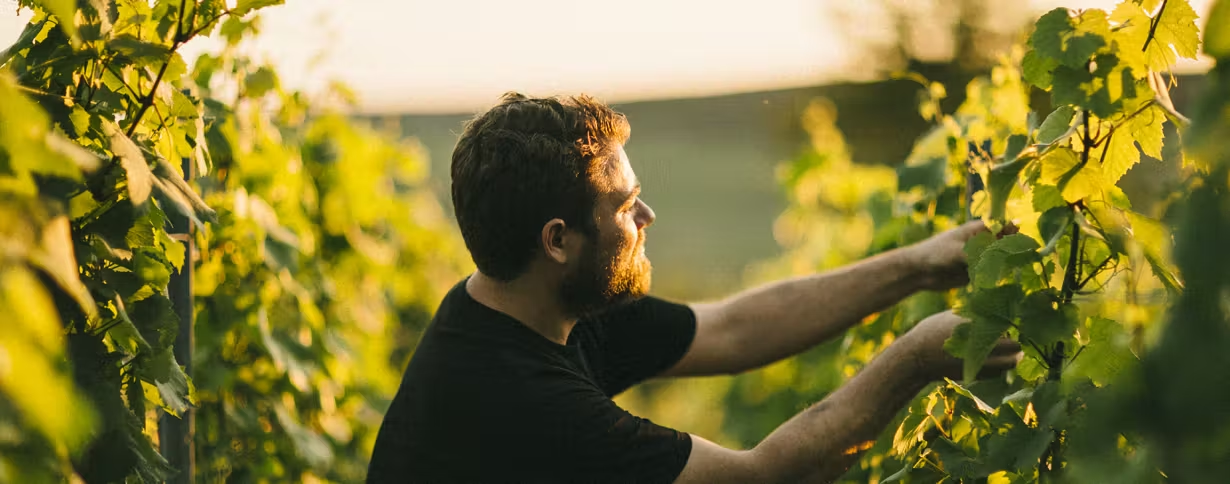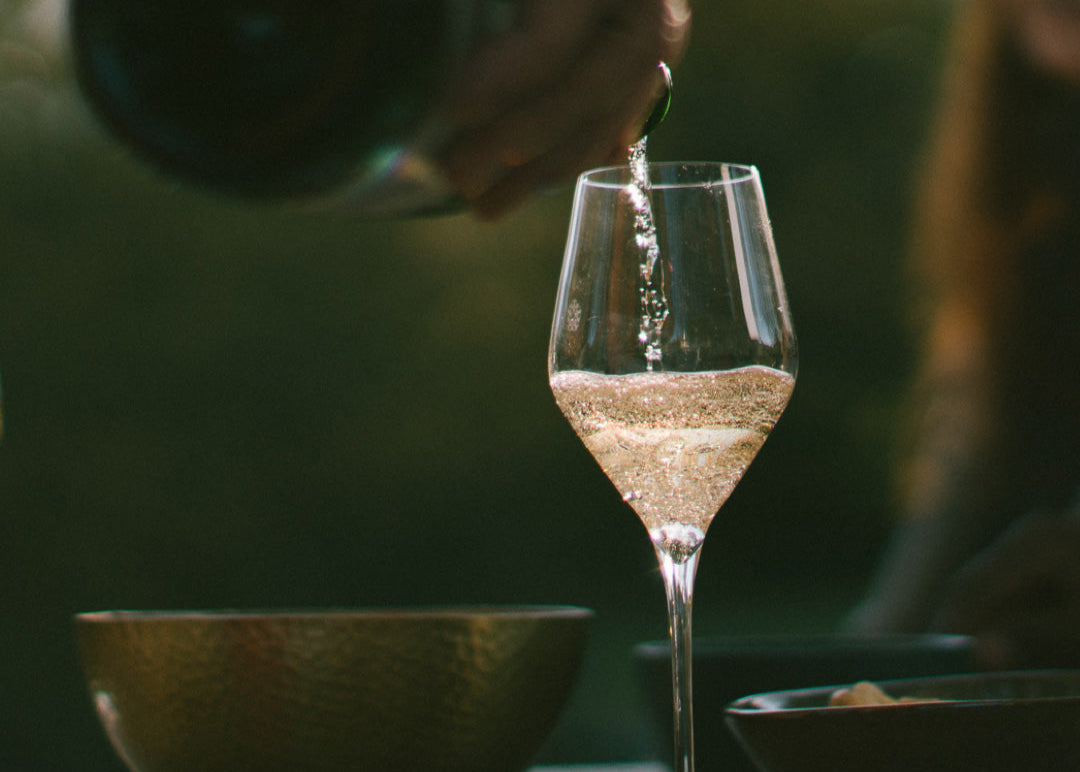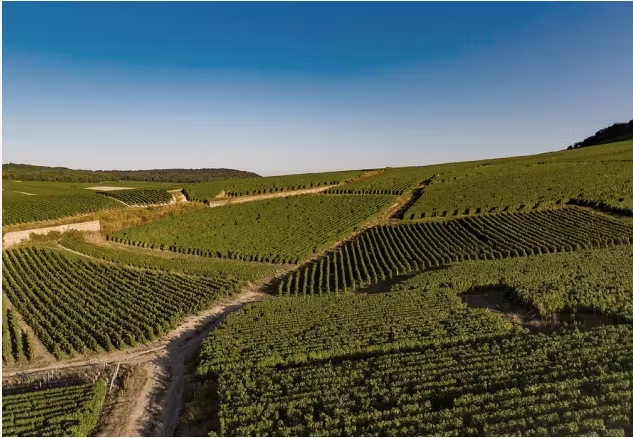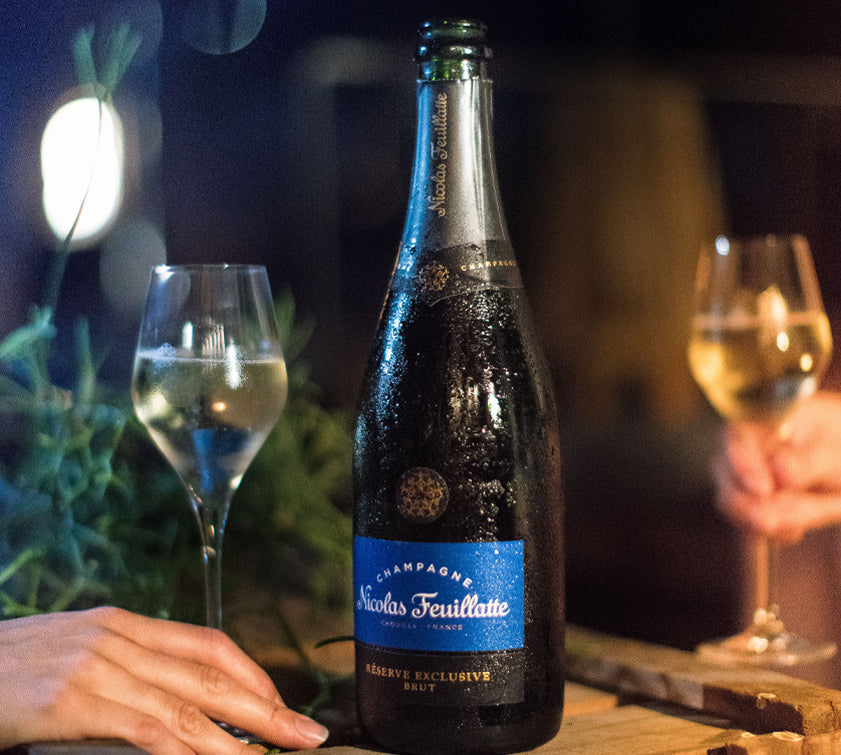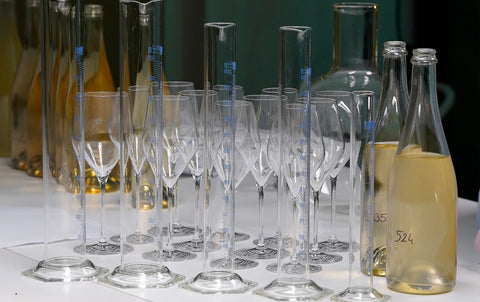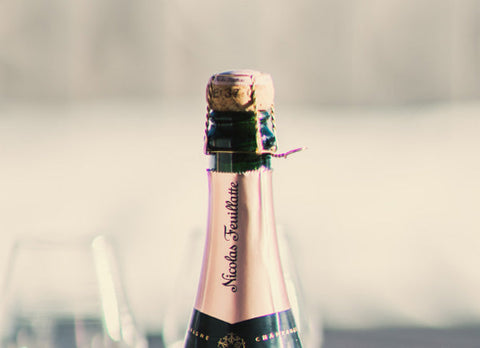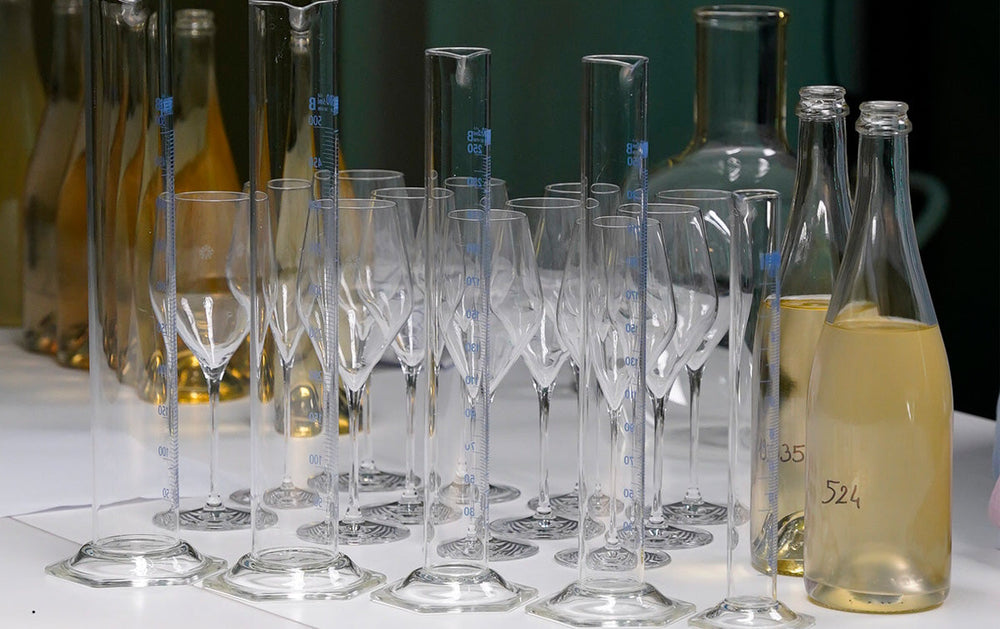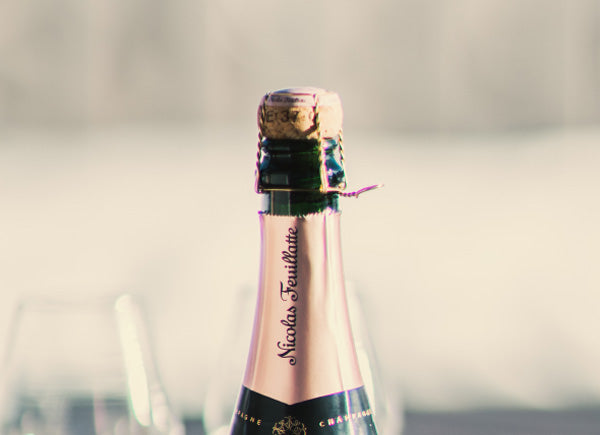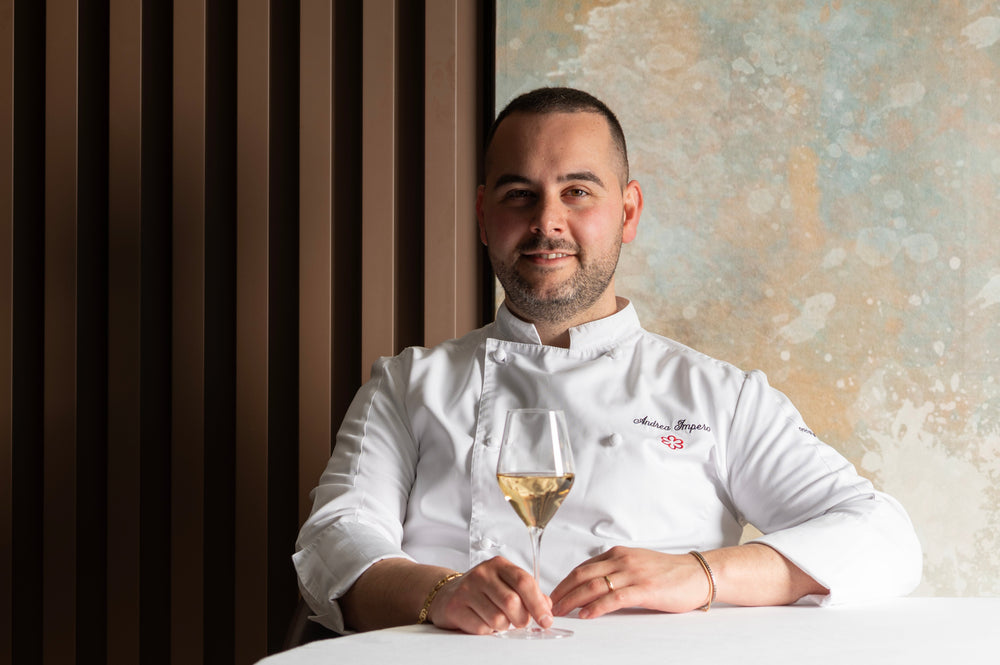Learn how to choose your champagne according to your tastes and occasions.
Champagne Brut, Extra-Brut, Blanc de Noirs, Demi-Sec... Few enthusiasts know the different grape varieties and varieties of champagne in their entirety.
However, there are significant differences, both in composition and flavor. So, how do you choose the one that best suits your needs when you're not a connoisseur? How do you find the perfect bottle for a special occasion? Maison Nicolas Feuillatte shares some tips for you to make the right choice.
Choose your vintage according to your tastes
That's the key: choose a champagne that pleases your palate. The difficulty for a novice lies in choosing the type of champagne, a strategic decision concerning the flavour profile and sweetness.
Fancy some sweet notes?
Demi-sec Champagnes
Demi-sec champagne has the highest sugar content of all champagnes, except for doux champagnes. According to Champagne Appellation legislation, a dosage of between 32 and 50 g of sugar per liter is permitted for the production of demi-sec champagne. For many, it is essentially a dessert wine. The truth is that it pairs particularly well with pastries. At the end of a meal, it adds a subtle and sweet finishing touch. The Réserve Exclusive Demi-Sec, with its notes of honey, yellow fruits and toast, falls into this category. A delicate and light cuvée, which stands out with exquisite notes of vanilla. Delightful.
It also pairs well with exotic cuisines: spicy, Caribbean, Middle Eastern, and Indian dishes. A surprising, yet high-quality combination of flavors!

Looking for finesse and elegance?
The Blanc de Blancs
Elegant and light, the Blanc de Blancs Champagne is all about minerality. It is appreciated for its rare finesse, a wine that never tires. Easy to drink and fresh, its composition is necessarily based on the Chardonnay grape variety, the only white grape variety in the Champagne vineyard, which explains its characteristic liveliness on the palate.
Nicolas Feuillatte Blanc de Blancs Millésimé includes Premiers Crus Chardonnays, others from the Sézannais and Petit Morin hillsides, joining the Marne and Aube, and more generous Chardonnays from the Marne Valley and the Montagne de Reims. This champagne is appreciated for its very fine bubbles, and for its fresh, spicy and fruity notes.
Also find the Grand Cru Millésime Blanc de Blancs, an authentic Chardonnay, totally in the Champagne DNA. Composed exclusively of the Chardonnay grape variety selected from the chiseled matrices of Grands Crus classés of the Côte des Blancs. Its slender and very elegant character is forged by the typicity and quality of the nourishing soils: body and minerality thanks to the vines planted in the chalk, terroir which signs Great Champagne wines. Aged in cellar for 8 years minimum. An excellent champagne as an aperitif, and goes perfectly with seafood (grilled sea bass, shellfish etc.).

A fruity champagne?
Rosé Champagne
Do you enjoy fruity wines? The delicious flavors of Rosé Champagne are made for you! Red fruits, currants, blueberries… its nose and color reflect this specificity: Rosé Champagne brings this sweetness with sweet accents tinged with a hint of acidity. To accompany desserts made with red fruits, offer a bottle of Réserve Exclusive Rosé is a first-rate option. It is also an excellent companion to salmon sashimi and exotic cuisine in general. Fresh and delicious, this blended Rosé Champagne will captivate your guests with its rich aromatic palette.

Nicolas Feuillatte champagne for every occasion!
While individual preferences must of course be respected, there are a few standards to help avoid unfortunate mistakes.
For the aperitif:
Brut or Extra-Brut Champagnes
To start a meal, these are the most classic options. Adapted to the tastes of the greatest number, these champagnes have the advantage of being suitable for a maximum of dishes offered at the opening of the reception. As such, the Brut Millesime Guarantees a positive response from your guests. Made from a blend of equal parts Pinot Noir, Meunier, and Chardonnay, this cuvée is in the pure tradition of Brut Champagne. With a low sugar content without its attack being too frank, it perfectly captures the characteristics of brut sparkling wines.

A vinous champagne for the meal: the Blanc de Noirs
This champagne is made entirely from the Pinot Noir grape variety. Powerful and structured, it is easily recognizable. This type of champagne is said to be "vinous," similar in taste to non-sparkling red wines. It pairs perfectly with rich dishes, especially those with sauce. It is an excellent alternative to continuing the meal exclusively with Champagne after the aperitif. To complement your fish or meat dishes, the Grand Cru Blanc de Noirs Millesimé represents a great opportunity. Bottled in 2012, it represents the uniqueness of the wines of the Champagne terroir.

For dessert,
choose between Demi-Sec and Rosé
Deciding between these two champagnes is a matter of taste, although we tend to pair red fruit desserts with Rosé Champagne. A suggestion, however: treat yourself to a prestigious cuvée, an exquisite Rosé de Saignée Champagne, an aromatic explosion: Palmes d’Or 2008 Rosé Intense .


